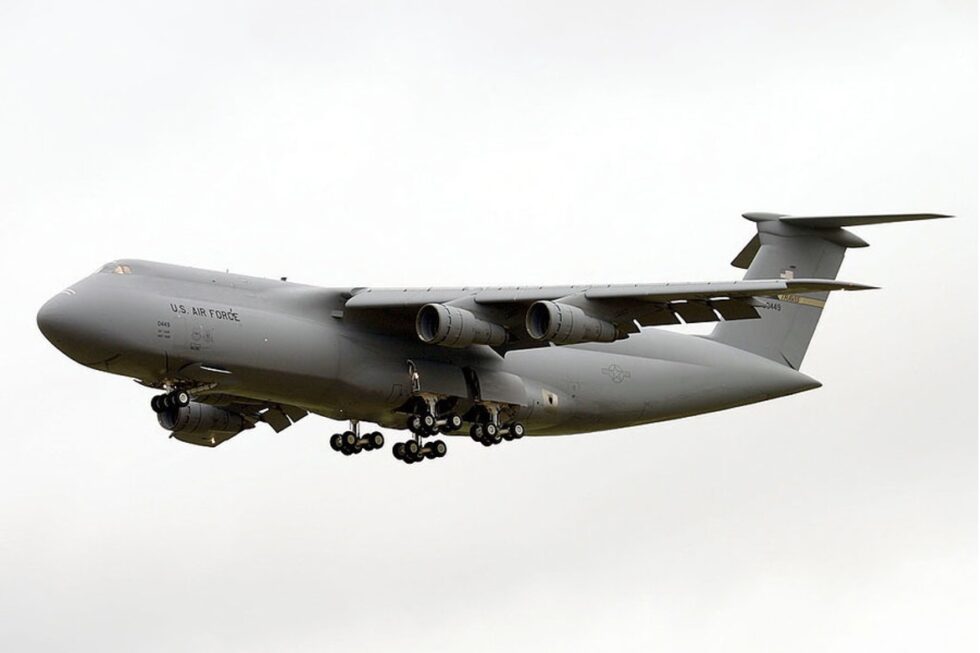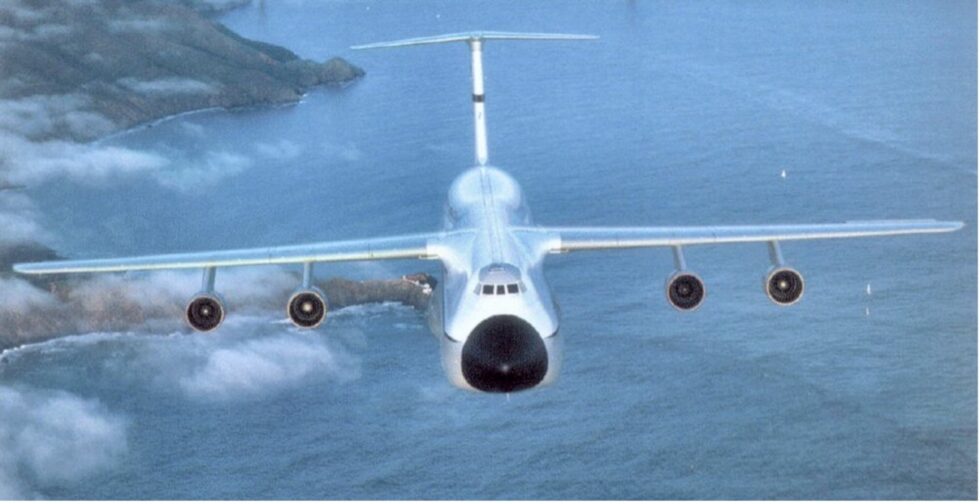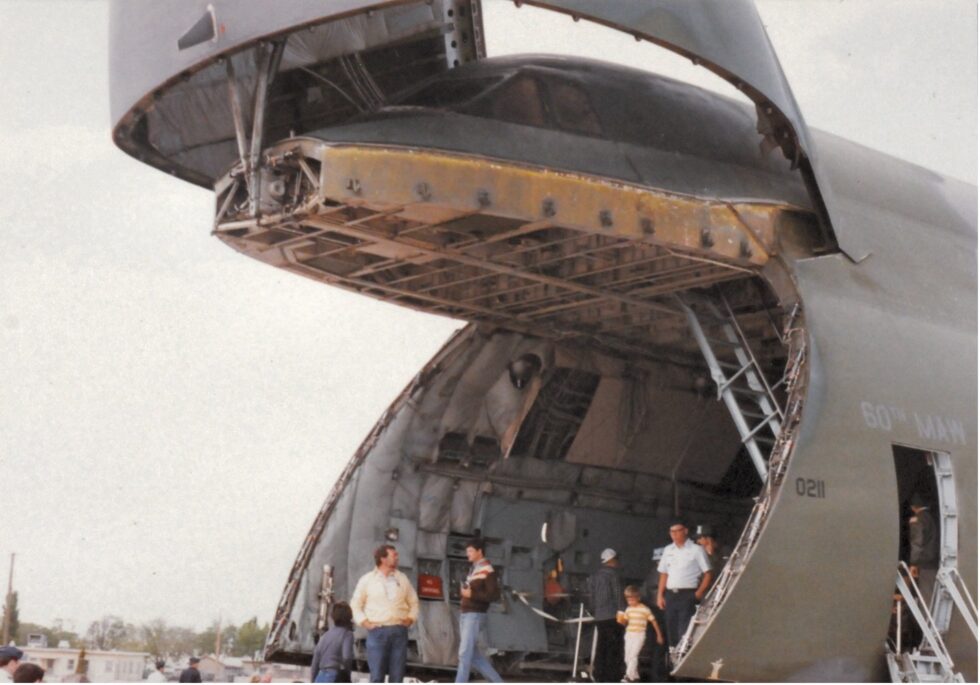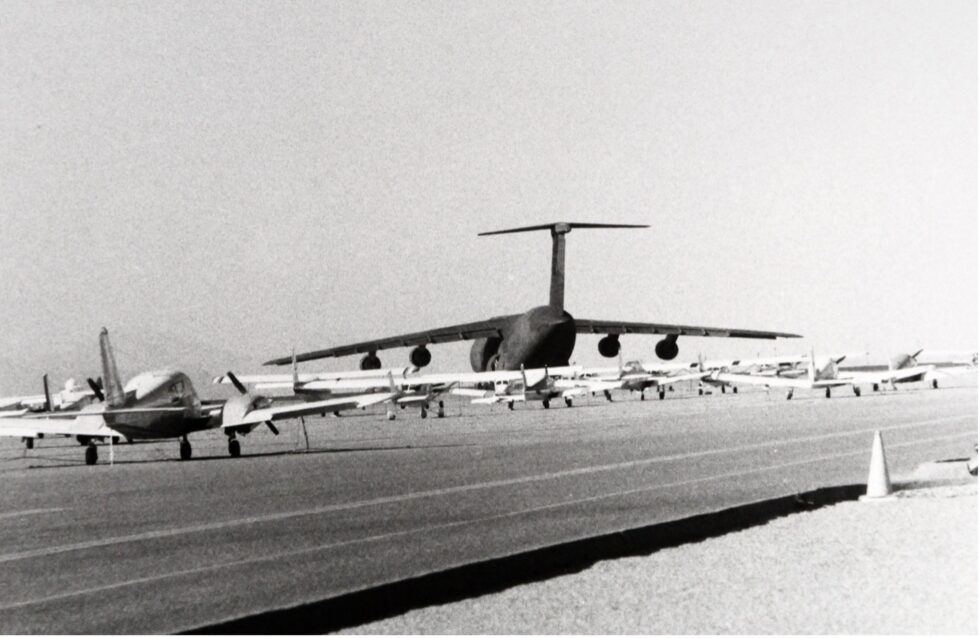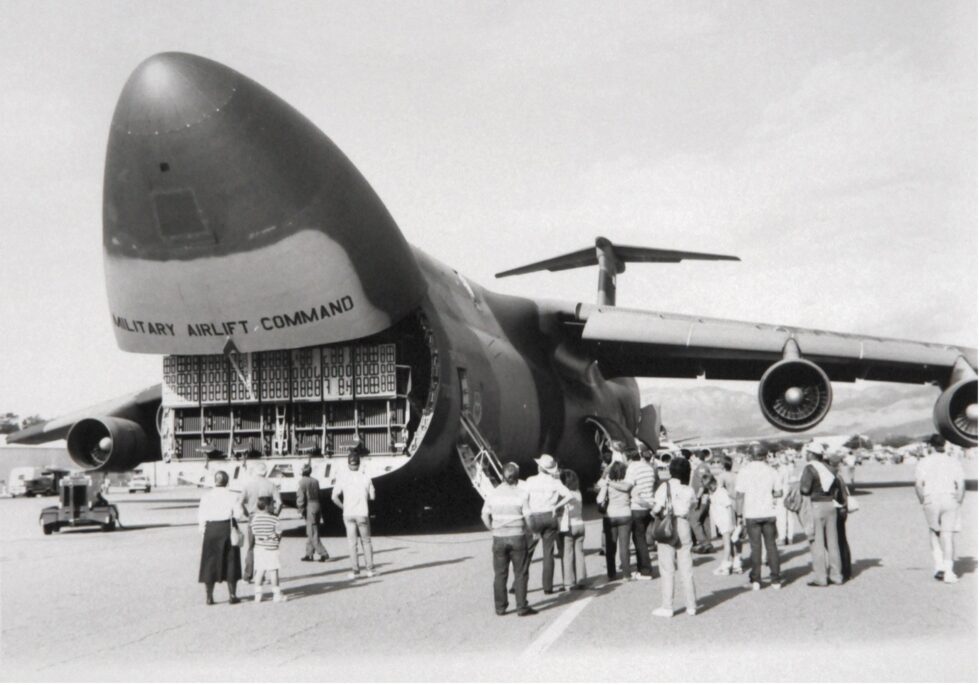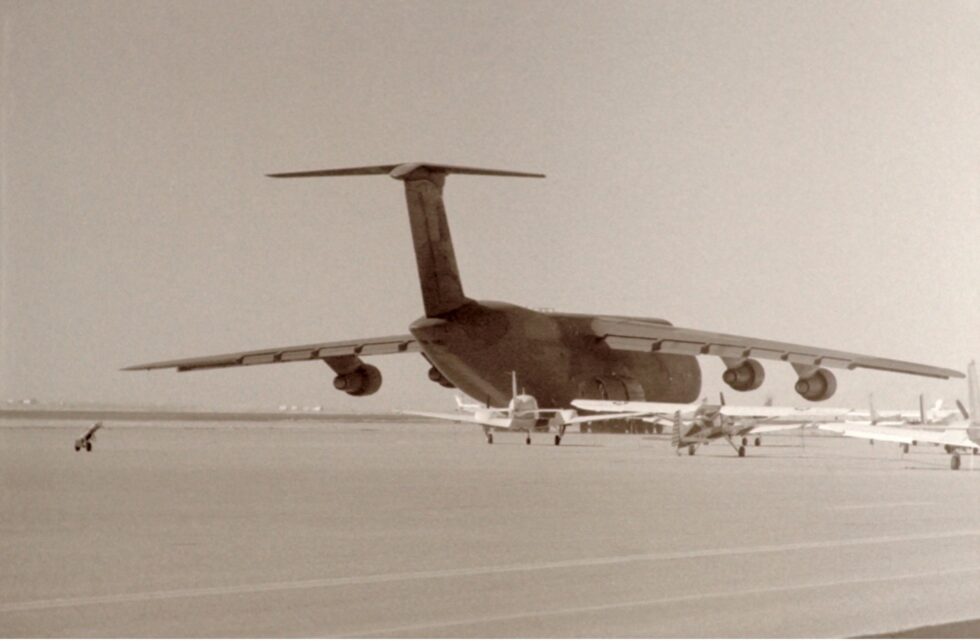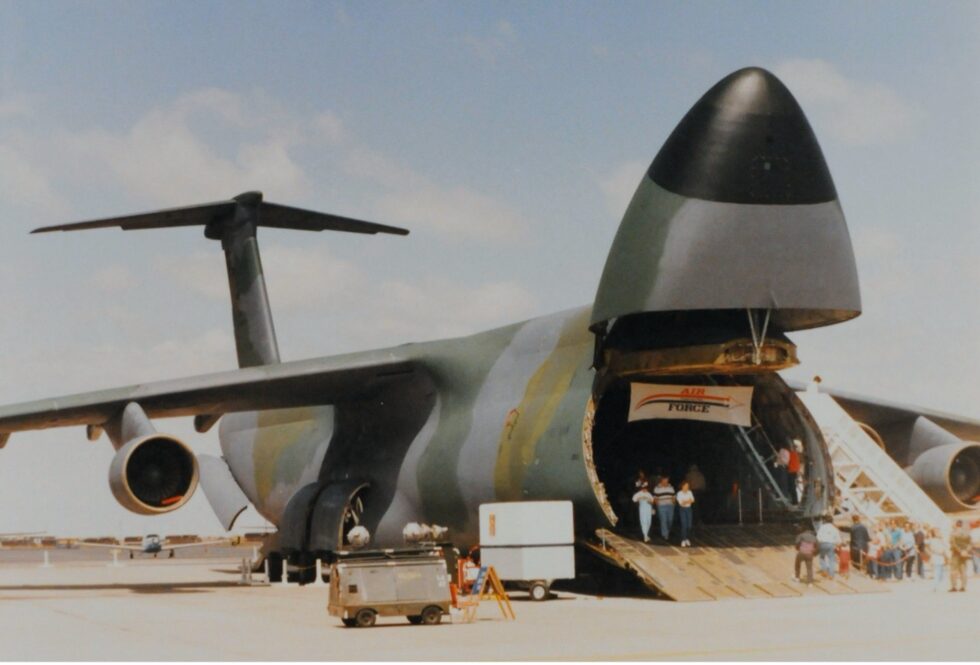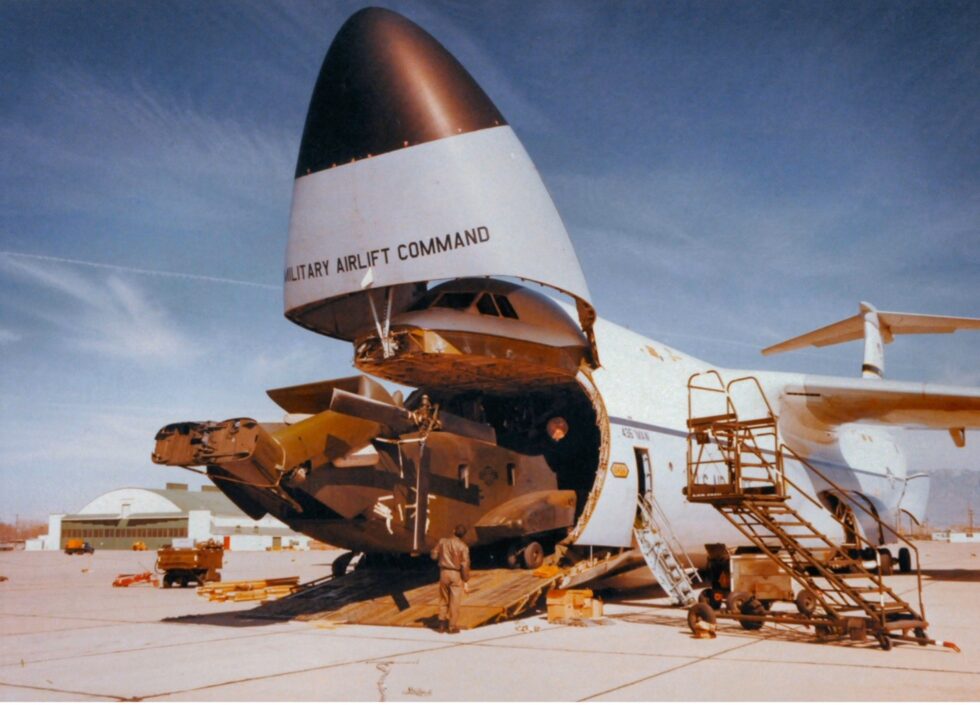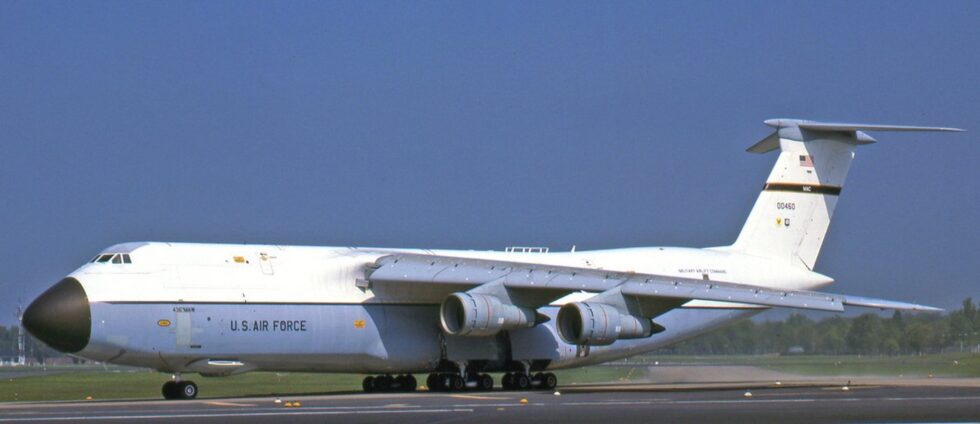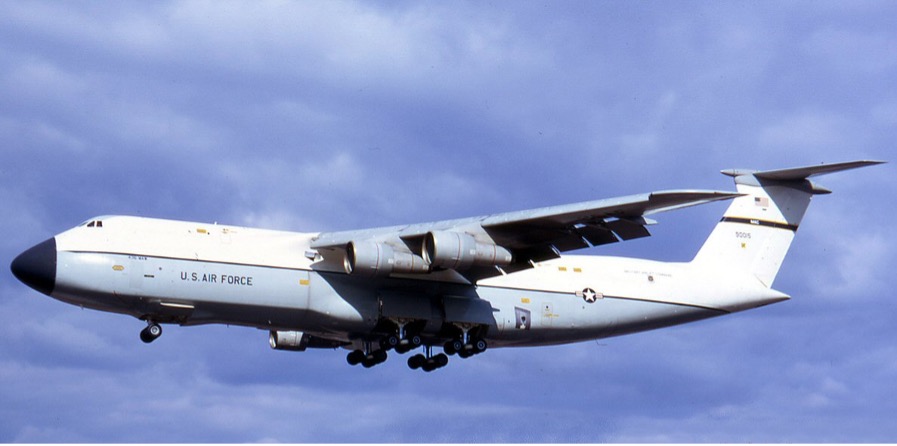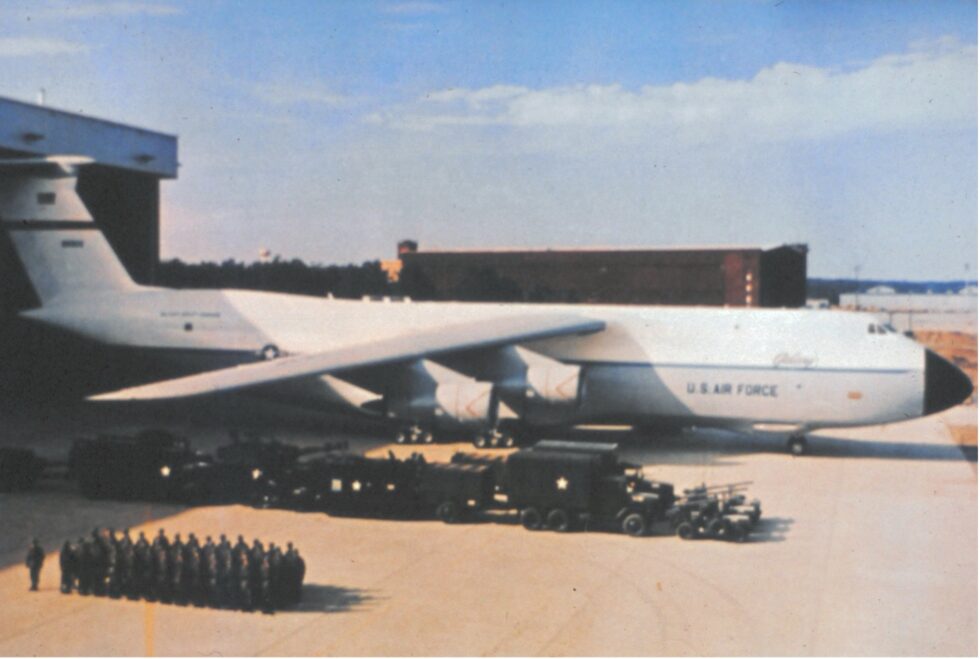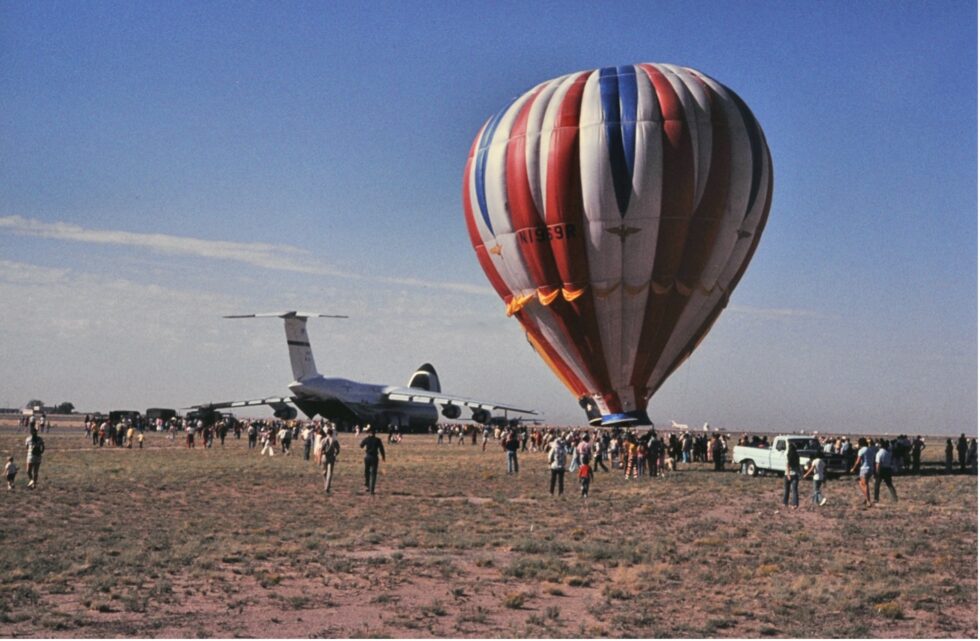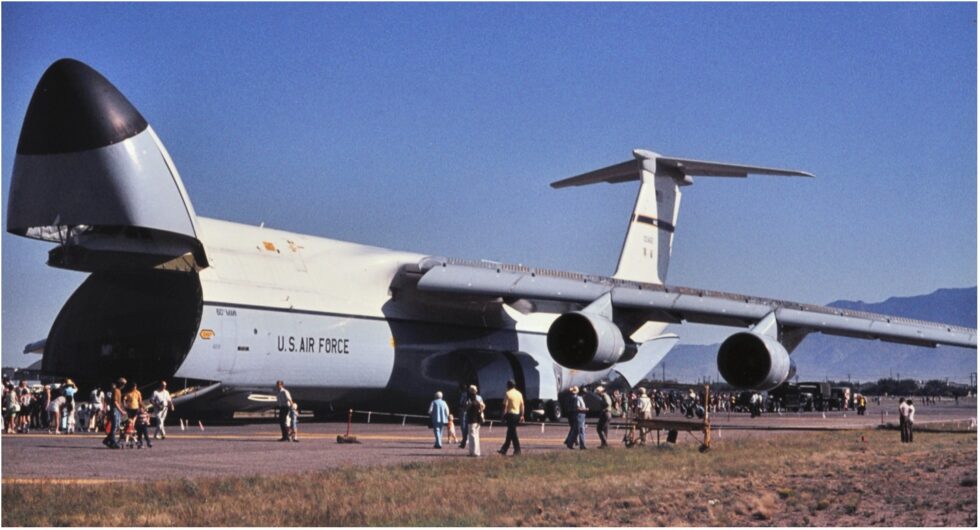USAF Lockheed C-5A Galaxy
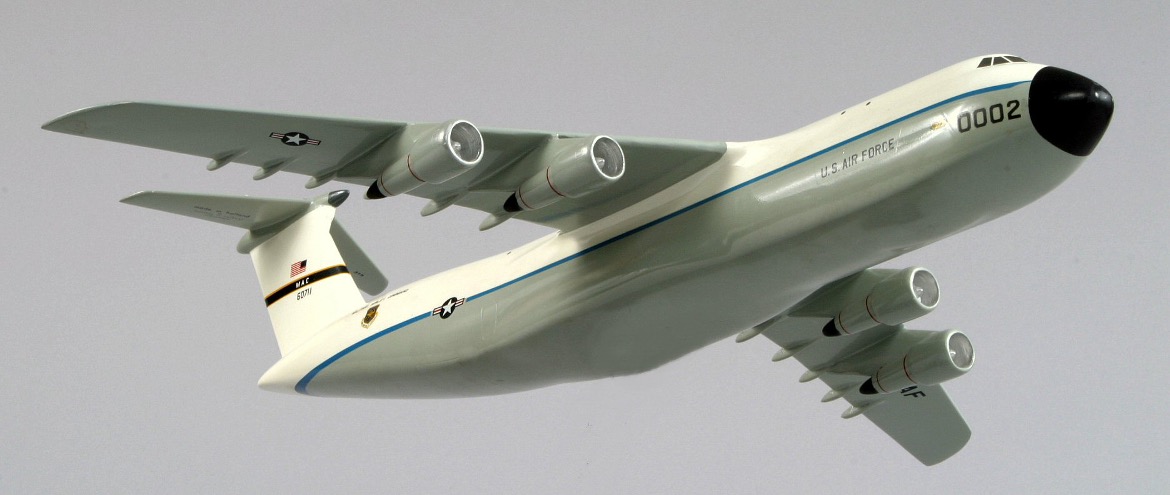
MODEL BY:
Lockheed Corporation
Model Scale:
1/144
MODEL ADDED:
12/12/1969
historical significance
First Albuquerque Visit: 1969
Additional Information:
The Lockheed C-5 Galaxy is a large military transport aircraft designed and built by Lockheed, and now maintained and upgraded by its successor, Lockheed Martin. It provides the United States Air Force (USAF) with a heavy intercontinental-range strategic airlift capability, one that can carry outsized and oversized loads, including all air-certifiable cargo. The C-5 is among the largest military aircraft in the world.
The C-5 Galaxy’s development was complicated, including significant cost overruns, and Lockheed suffered significant financial difficulties. Shortly after entering service, cracks in the wings of many aircraft were discovered and the C-5 fleet was restricted in capability until corrective work was completed.
The C-5 is a large, high-wing cargo aircraft with a distinctive high T-tail fin (vertical) stabilizer, with four TF39 turbofan engines mounted on pylons beneath swept wings. The C-5 has 12 internal wing tanks and is equipped for aerial refueling. Above the plane-length cargo deck is an upper deck for flight operations and for seating 80 passengers in rear facing seats. Bay doors at both nose and tail open to enable “drive-through” loading and unloading of cargo. The USAF has operated the C-5 since 1969.
The Lockheed C-5A, the largest transport aircraft built to date, was given its FAA high altitude airport evaluation tests on November 9, 1969 at Kirtland Air Force Base in Albuquerque New Mexico. FAA tests were performed on the C-5 because Lockheed planned to sell these aircraft as commercial freighters and airliners. Over the years, many C-5s have visited Kirtland AFB.
The C-5A could flip-up the nose, open the tail doors, and lower the fuselage to accommodate the drop down ramps. Two photos below were taken at Kirtland AFB.
GALLERY:
SEARCH OUR DATABASE:

